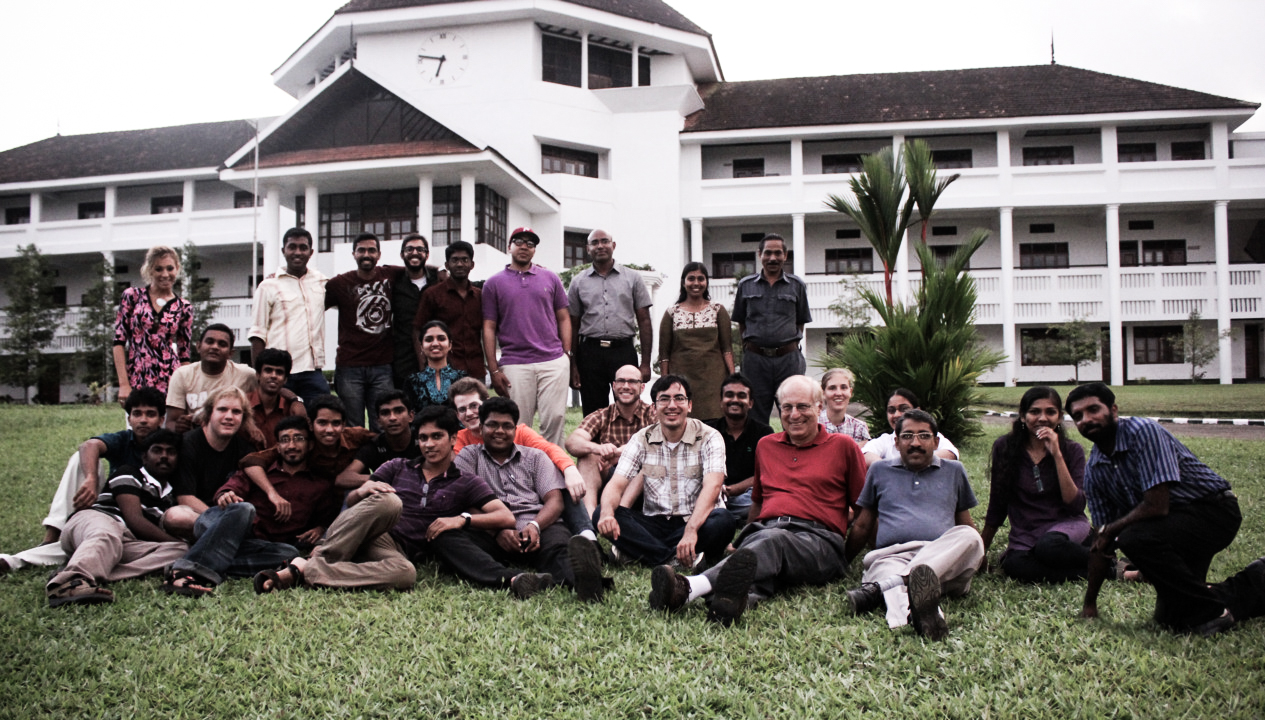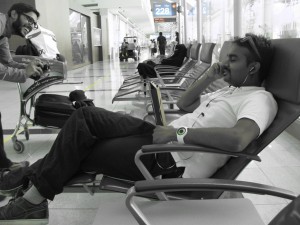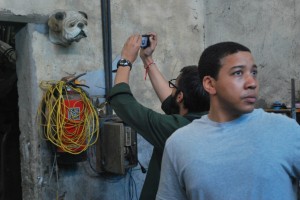With the facilitation of Designmatters and the Provost’s office, students Siddharth Vanchinathan, Byron Wilson and Jasen Mehta (Graduate Industrial Design) conducted field research in Kerala, India, over the summer as part of a student and faculty team from Caltech, Saintgits College of Engineering and Saintgits Institute of Management. The field research has informed and grounded their current work investigating design solutions for “base of the pyramid” markets.
This research trip is continuing as part of their current course work for Design for Development (E/M 105), a Caltech class led by Visiting Professor of Mechanical Engineering, Ken Pickar. Instructor Nathan Allen is the Art Center faculty mentor for the team.
In this repost from the team’s blog, Graduate Industrial Design student Siddharth Vanchinathan gives an earnest account of this recent trip to India.
Being born and brought up in India, naivety would assume that this trip to Kerala would be commonplace and uninteresting for me. It would seem like I would be able to predict situations and conditions and have preconceived notions based on my life experiences growing up in the southern part of the country. Before this trip, I had visited Kerala several times – mostly for family get-togethers, the most frequented places would be the ones where different parts of the family was which was usually not too far from each other. As a result I visited Kochi and it’s neighboring towns during my visits here.
I tried very hard to rid myself of any preconceptions in preparation for the trip. It was hard, because it meant unlearning all that I had known about Kerala and its culture from first hand experiences. Design education has taught me not to judge quickly but to observe, to uncover and to digest. Kerala seemed to be a hopeless state to me. No major industry, labor problems, strikes and bandhs disrupting productivity every week. Kerala has the highest literacy rate, and that’s what is probably making its people lazy. Being socialist is not a bad thing – but that’s an opinion for another article.
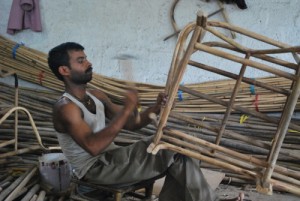
A skilled worker shapes furniture from cane. Cane is imported from eastern states of India or from Malaysia.
Preconceptions also regarding the engineers that outnumbered us from the start. We designers tend to dislike engineers. We believe that they have a very narrow vision of the world and hence of its problems. They tend to be feature-creeps and are always trying to do more with less, even if that is a good thing at times. Being an engineer myself, the source of these preconceptions were internal to a large extent. I was guilty of a lot of the things that I criticize engineers for now in my engineering days.
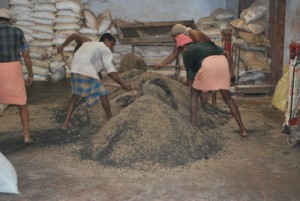
Vembanad Chemicals in Kottayam Industrial sector manufactures upto 36 tons of fertilizer everyday. They use manual labour to mix the raw materials and then bag the finished mixture.
I am glad to say that a lot of these assumptions I had as listed above have changed drastically over the past few weeks. I have now learned to embrace the socialistic work culture that gives this state its unique identity. I now understand the motivations behind employee camaraderie and how it affects the employer. Another big eye opener was that a lot of the laborers that we met are paid pretty well for the skilled jobs that they are employed for. Some even come from out of state to work here as skilled laborers lured by the promise of a fatter paycheck. Kerala isn’t a hopeless state after all. Most of the middle class own large plots of land that are cultivated with cash crops, the labor force is paid well and the upper class isn’t complaining either. There isn’t as much poverty in this state – education is to be credited for that. In speaking with Prof. Thomas Varghese, I learned the reasons behind why Kerala has such a high literacy rate – the Christian missionaries not only opened churches everywhere, they also opened schools and hospitals and made them available for next to nothing to people who earlier did not have access to them.
I have also discovered a new dimension in engineering problem solving. There is an empathic side that I never knew existed. Maybe it was the personalities of the people on the team, or the circumstances that made them that way, but I applaud the empathy with which all the engineering students approached looking for problems. Empathy is the first step for creating something with social value and I am proud to be a part of this group.
To be honest, I was a little skeptical about the process that we would use to go about identifying problems in the community. Being such a large group, I understand that it was difficult to have some revealing conversations with people who could do with an easier life, but that’s another project in another class. I am confident that we have a talented group of people and I am looking forward to working with everyone.
Checkout the team’s project blog to learn more about their research and explorations.
